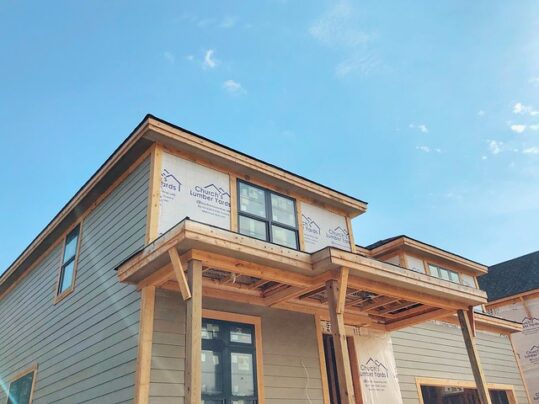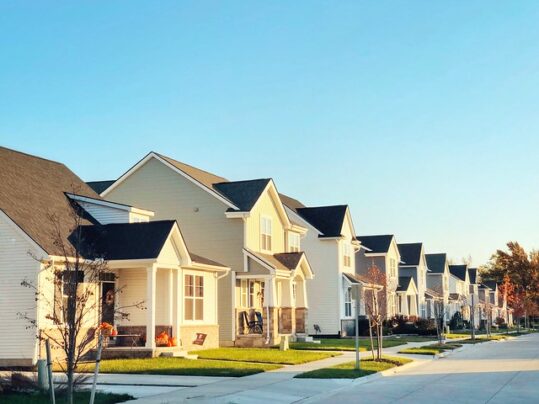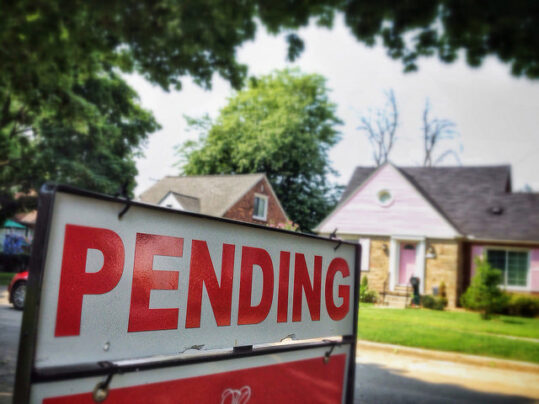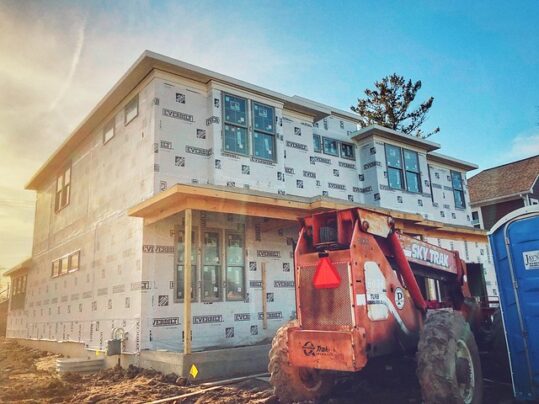The home price surge of the past few years was primarily caused by a lack of homes for sale. Too few options led buyers to fight for the homes that were available. Bidding wars and competition made for a challenging housing market, as inventory fell to historic lows. This year, though, things have begun to change. There are more homes available for sale than there were last year. In fact, according to new numbers from the National Association of Realtors’ consumer website, the number of homes for sale was up nearly 27 percent year-over-year in September. That’s about even with August’s rate of improvement. Danielle Hale, the website’s chief economist, says the gains have been fueled, in part, by favorable selling conditions and current homeowners can still benefit. “For homeowners deciding whether to make a move this year, remember that listing prices – while lower than a few months ago – remain higher than in prior years, so you’re still likely to find opportunities to cash-in on record-high levels of equity, particularly if you’ve owned your home for a longer period of time,” Hale said. (source)
Flood Risk A Consideration For More Buyers
You want to feel safe at home. Which is why it’s important to do some risk assessment when shopping for a house to buy. After all, thinking through some potential worst-case scenarios may help inform your decision-making process and avoid heartache down the road. Fortunately, today’s buyers have access to more information than ever before. And, according to one new analysis, it’s making them particularly aware of one specific risk more than the rest. In fact, the analysis found buyer behavior hasn’t been impacted that much from risks like fire, drought, extreme heat, and storms, but it has been affected by flooding. The data shows the rate of both mortgage denials and buyer withdrawals in areas with a high-flood risk have risen over the past five years. Down payments also tend to be smaller in these areas. But while flood risk may have buyers feeling more cautious, it hasn’t lessened their interest, as homes in areas with flood risk continue to appreciate faster than in other areas. (source)
Mortgage Rates Increase Again
According to the Mortgage Bankers Association’s Weekly Applications Survey, average mortgage rates rose again last week, with increases for 30-year fixed-rate loans with both conforming and jumbo balances, loans backed by the Federal Housing Administration, 5/1 ARMs, and 15-year fixed-rate loans. The 30-year fixed rate is now the highest it’s been since 2006. Joel Kan, MBA’s associate vice president of economic and industry forecasting, says higher rates have slowed home buying activity. “The current rate has more than doubled over the past year and has increased 130 basis points in the past seven weeks alone,” Kan said. “The steep increase in rates continued to halt refinance activity and is also impacting purchase applications, which have fallen 37 percent behind last year’s pace.” Demand for loans to buy homes was also down week over week. Results, however, were impacted by Hurricane Ian, which drove demand in Florida down 31 percent. The MBA’s weekly survey has been conducted since 1990 and covers 75 percent of all retail residential mortgage applications. (source)
New Home Sales See An Unexpected Surge
With reports of slower buyer demand, higher mortgage rates, and economic uncertainty in the news, you might expect that sales of newly built single family homes would be falling. Economists polled by Reuters certainly did. Polled before the release of the U.S. Census Bureau and Department of Housing and Urban Development’s New Residential Sales report, economists said they expected sales would decline to an adjusted annual rate of 500,000 units. Instead, the newly released numbers show sales surging to an annual pace of 685,000 units. In other words, sales of new homes spiked 28.8 percent in August from the month before. The improvement seems like encouraging news for the market at a time when buyers are hesitant and traffic is down. However, the gains may be short lived, since mortgage rates, after several weeks of decline, have jumped higher in recent weeks. Also in the report, the median sales price of new homes sold in August was $436,800. The average price was $521,800. (source)
Slower Traffic Offers Benefit To Buyers
In a fast-paced housing market, buyers have to move quickly. That means making big decisions without much time to think. It can be stressful. Anyone who was active in the market last year knows the feeling. This year, though, the market’s rebalancing and that’s meant changing conditions for buyers. And according to one recent analysis, some of the changes will make it easier for home shoppers in the months ahead. How so? Well, the once fast pace of the housing market has slowed. The data shows buyer traffic – as measured by home showing activity – has fallen 12.2 percent from where it was last year at the same time. And while showings are still above pre-pandemic levels, traffic is undoubtedly slower. That’s welcome news for prospective buyers, as it means less competition, fewer bidding wars, and more time to consider options when looking at homes to buy. After the past two years, that should be a big relief to buyers. (source)
What Does Affordability Look Like Now?
Affordability is always a top concern for home buyers. That’s no surprise. Buying a home is a major financial transaction and you want to feel comfortable knowing you’re getting a good deal for your money and that you can afford the monthly mortgage payment. That’s why recent spikes in mortgage rates and home prices have potential buyers more hesitant these days. So where does affordability stand right now? Well, according to the most recent release of the Mortgage Bankers Association’s Purchase Applications Payment Index, the national median monthly mortgage payment actually fell recently, dropping from $1,844 in July to $1,839 in August. That continues a three-month trend of improving affordability. But Edward Seiler, MBA’s associate vice president, housing economics, and executive director, Research Institute for Housing America, says the gains likely stopped in September. “Most of the country saw modest improvements in home buyer affordability for the third straight month because of slightly lower mortgage rates amidst steady income gain growth,” Seiler said. “The recent stretch of modest affordability improvement likely hit a speed bump this month, as mortgage rates have jumped …” It’s true. Average mortgage rates have moved higher in recent weeks and have likely pushed mortgage payments higher as well. (source)
Contract Signings Stall In August
The National Association of Realtors’ Pending Home Sales Index measures the number of contracts to buy homes signed each month. Because it tracks contracts, not closings, it’s considered a good indicator of where home sales are headed. In August, the index registered a 2 percent decrease, marking the third consecutive month of declines. Lawrence Yun, NAR’s chief economist, says mortgage rates are the number one factor with buyers. “The direction of mortgage rates – upward or downward – is the prime mover for home buying, and decade-high rates have deeply cut into contract signings,” Yun said. “If mortgage rates moderate and the economy continues adding jobs, then home buying should also stabilize.” Yun expects mortgage rates to become more steady once inflation calms. That, and slower price appreciation, should lead sales to pick up. Regionally, August’s results show contracts to buy homes were down in the Midwest, Northeast, and South, but rose in the West. (source)
Average Mortgage Rates Move Higher
According to the Mortgage Bankers Association’s Weekly Applications Survey, average mortgage rates moved higher last week. Rates increased from the week before across all loan categories, including 30-year fixed-rate loans with both conforming and jumbo balances, loans backed by the Federal Housing Administration, 5/1 ARMs, and 15-year fixed-rate loans. Joel Kan, MBA’s associate vice president of economic and industry forecasting, says while rising rates have made buyers more hesitant, they still have options. “Purchase activity was 29 percent lower than a year ago, with higher rates and economic uncertainty weighing on buyers’ decisions,” Kan said. “With the recent jump in rates, the ARM share reached 10 percent of applications and almost 20 percent of dollar volume. ARM loans remain a viable option for qualified borrowers in this rising rate environment.” Despite higher rates, the purchase index was relatively flat week-over-week. In fact, demand for loans to buy homes was down just 0.4 percent. The MBA’s weekly survey has been conducted since 1990 and covers 75 percent of all retail residential mortgage applications. (source)
Housing Slowdown To Continue Due To Fed Policy
Fannie Mae’s Economic and Strategic Research Group releases a forecast each month detailing the group’s view of where the housing market and broader economy are headed. In September, the group’s outlook sees economic growth resuming in the second half of the year, but calls for the housing market’s slowdown to continue as the Fed fights inflation with higher interest rates. Doug Duncan, Fannie Mae’s senior vice president and chief economist, says that fight will likely continue into 2023. “In our view, the recent interest rate surge is due to the market’s recognition of two critical factors: that inflation is indeed not transitory, and that, to tame it, the Federal Reserve will need to be resolute, even at the risk of possible recession,” Duncan said. “That said, the rise in rates is having the Fed’s desired effect on housing, as house price growth began to slow in June. We expect the slowdown in housing to continue through 2023.” (source)
What’s New In New Home Construction?
You can tell a lot about the housing market by watching the balance of supply and demand. When there are too few homes for sale, the market’s harder on home buyers. Too few homes leads to rising prices and buyer competition. These days, fortunately, the number of homes for sale is improving. That’s good news for buyers, as it’ll help slow price increases after years of double-digit spikes. But inventory’s still low, and a big part of reaching better balance is the pace of new home construction. In short, we need more new homes. So what’s happening in the new home market? Well, the most recent New Residential Construction report from the U.S. Census Bureau and the Department of Housing and Urban Development shows the number of single-family homes that began construction last month was higher than the month before. In fact, it rose 3.4 percent. That’s encouraging, as it means a bump in new home supply may be on the way. However, while housing starts rose, permits to build future new homes fell 3.5 percent. That’s an indication that builders who’ve recently ramped up production may soon be pulling back, due to concern about economic conditions and buyer demand. (source)











